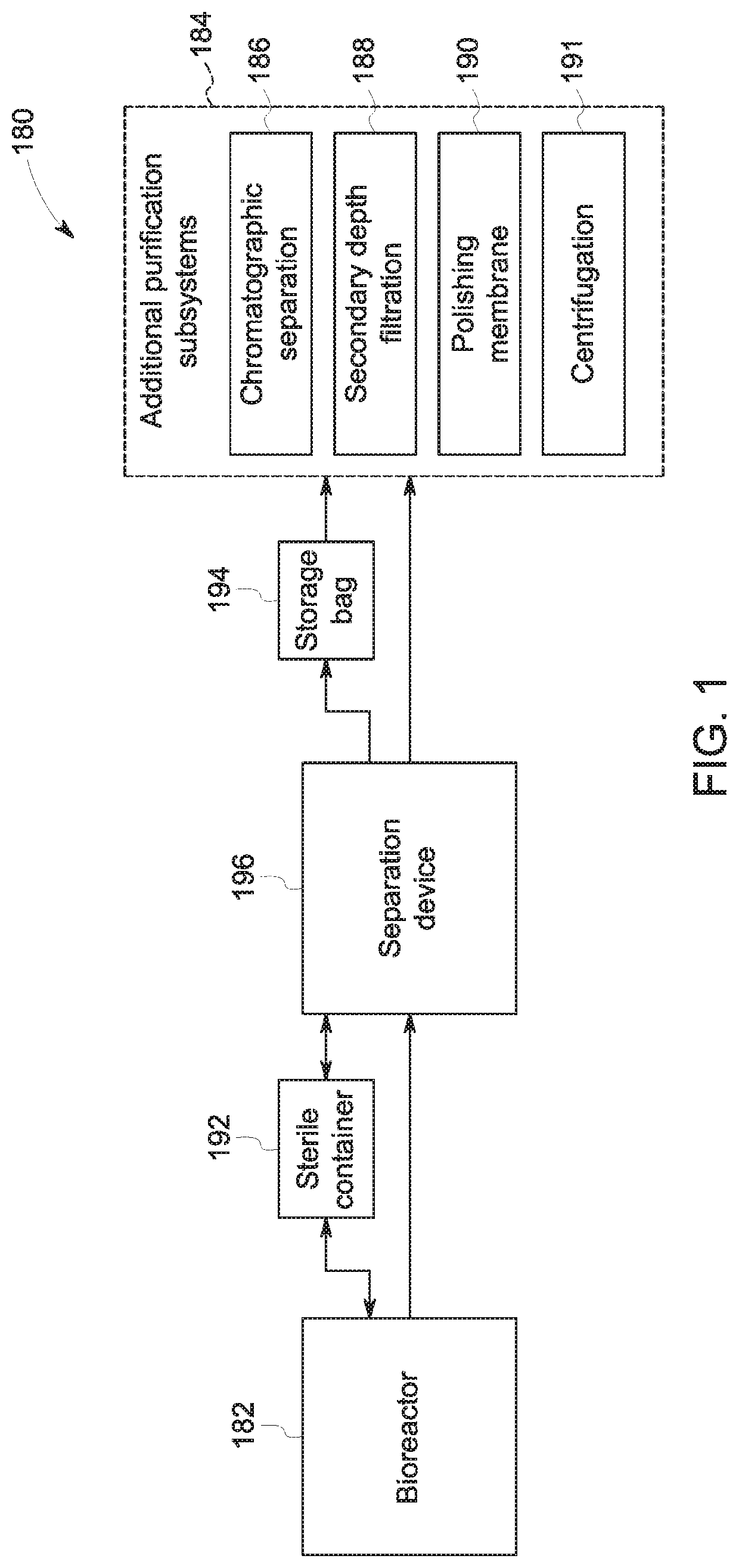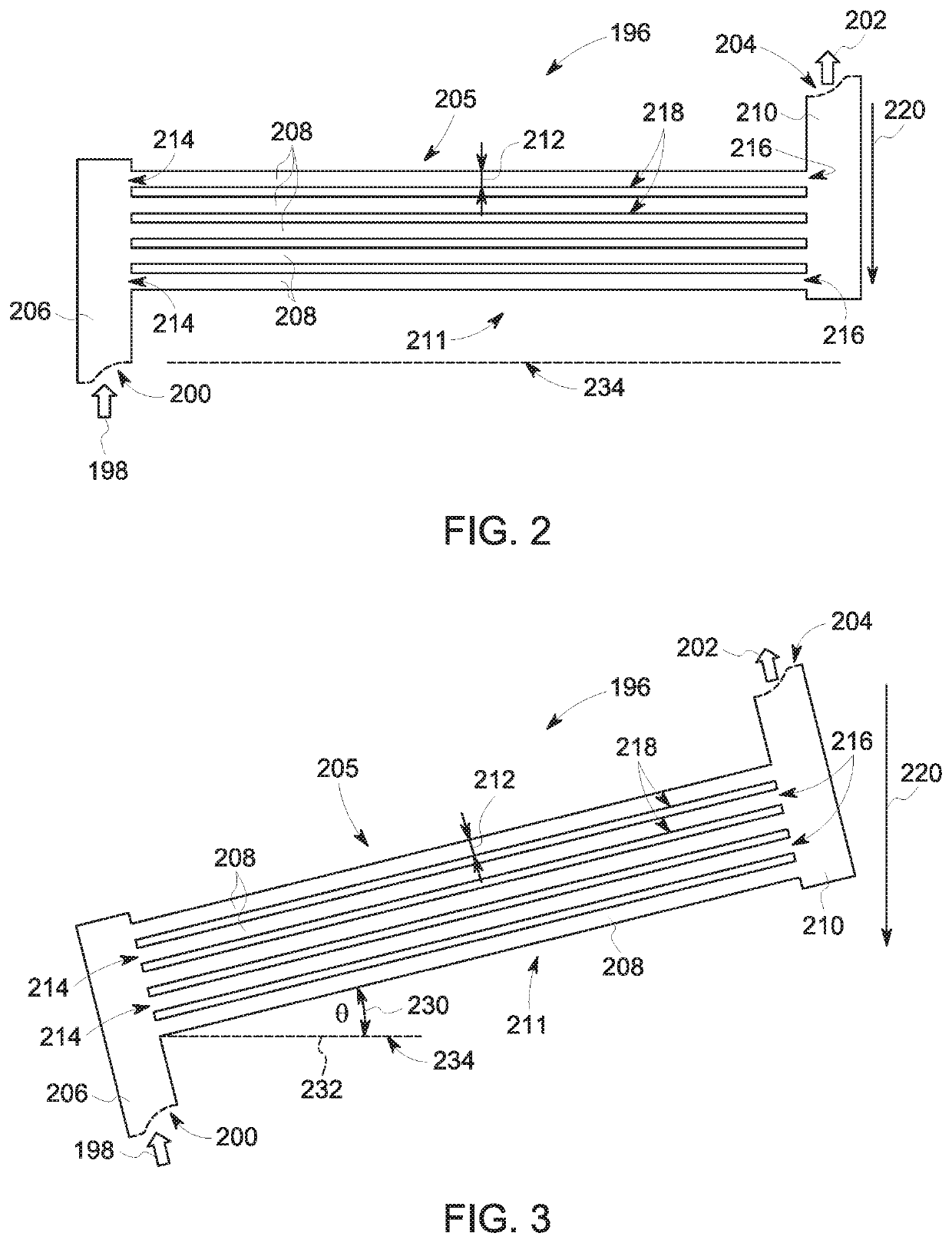Separation devices, associated methods, and systems
a technology of separation device and mesofluid channel, which is applied in the direction of separation process, settling device inclination control, laboratory glassware, etc., can solve the problems of unsatisfactory manufacturing productivity, prohibitive technology, and inability to achieve centrifugation in small single-use contexts,
- Summary
- Abstract
- Description
- Claims
- Application Information
AI Technical Summary
Benefits of technology
Problems solved by technology
Method used
Image
Examples
examples
[0077]
TABLE 4Experimental conditions for processing cell culture fluid using three different size devices.Narrow 5Stack w / WideNarrowFilmNarrowNarrow0.03 wt %Experimental Conditions5 Stack5 StackSingle5 Stack5 StackpDADMACProcess AngleDegrees5512.55525Target Flow RatemL / min8682.6888Actual Flow RatemL / min85.77.92.77.97.97.9Device VolumemL2,00020065200200200Residence Timemin23.325.424.125.425.425.4Feed Cell Concentrationcells / mL42M42M42M28M57M50MFeed Viability%99.699.699.639.7%17.1%48.6%Feed TurbidityNTU1,5921,5921,5922,1402,8897,064
[0078]Experimental conditions and results of processing of cell culture fluid using three embodiments of the separation device (e.g., separation devices 196 and 246) are shown in Table 4 above and Table 5 below. The cell culture fluid 198, in this case a CHO cell suspension, was processed through a device having five relatively wide mesofluidic channels disposed in a series stack, a device having five relatively narrow mesofluidic channels disposed in a ser...
PUM
| Property | Measurement | Unit |
|---|---|---|
| angle | aaaaa | aaaaa |
| angle | aaaaa | aaaaa |
| angle | aaaaa | aaaaa |
Abstract
Description
Claims
Application Information
 Login to View More
Login to View More - R&D
- Intellectual Property
- Life Sciences
- Materials
- Tech Scout
- Unparalleled Data Quality
- Higher Quality Content
- 60% Fewer Hallucinations
Browse by: Latest US Patents, China's latest patents, Technical Efficacy Thesaurus, Application Domain, Technology Topic, Popular Technical Reports.
© 2025 PatSnap. All rights reserved.Legal|Privacy policy|Modern Slavery Act Transparency Statement|Sitemap|About US| Contact US: help@patsnap.com



